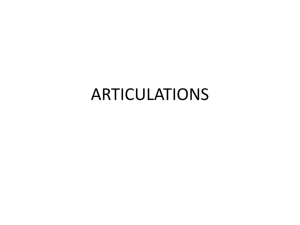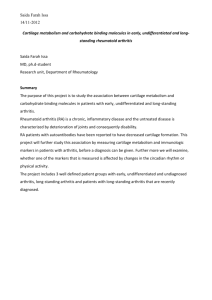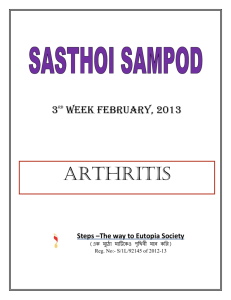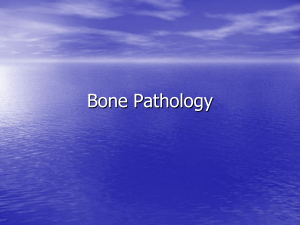Inflammatory Disorders of Joints
advertisement
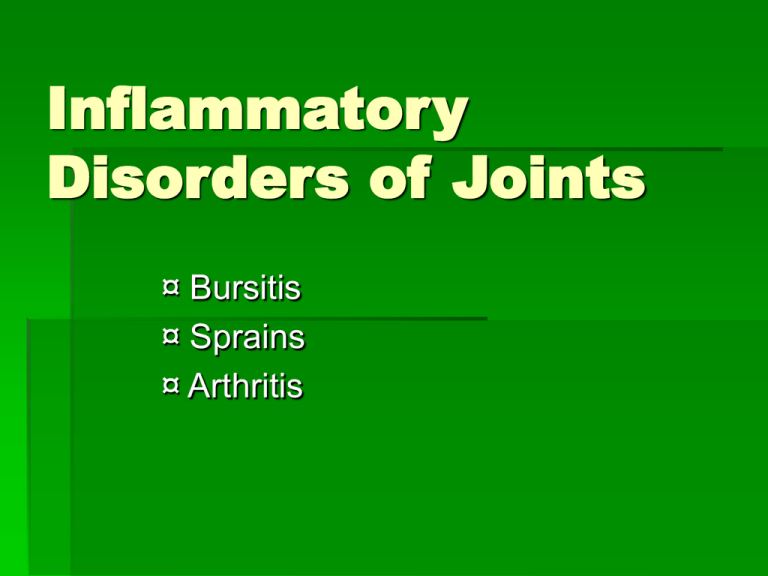
Inflammatory Disorders of Joints ¤ Bursitis ¤ Sprains ¤ Arthritis Bursitis often called “water on the knee” caused by inflammation of the synovial membrane usually fluid is synovial Sprain Occurs when the ligaments or tendons reinforcing a joint are damaged by too much stretching or when they are torn away from the bone Because ligaments and tendons are fibrous cords with little blood supply, they heal slowly. Arthritis Arthritis is an inflammation of the joint Very painful, most crippling disease in US Symptoms include pain, stiffness and swelling of the joint. Depending on the type of arthritis, changes in the joint structure can occur. Types of Arthritis Osteoarthritis (OA) – joint breaks down over time because of wear and tear 85% of people with arthritis have OA affects hyaline cartilage cartilage softens and breaks down Bones thicken where cartilage breaks down; extra bone is made called bone spurs and restricts joint movement Types of Arthritis Rheumatoid arthritis (RA) – a more severe type of imflammation RA is an autoimmune disease; the body attacks its own tissue and destroys it Synovial membranes swell and release bad cells that release chemicals that destroy tissue. As cartilage is destroyed, scar tissue forma and connects the bones Cartilage then turns into bones creating deformed joints Rheumatoid Arthritis Types of Arthritis Gout is a disease where uric acid (waste product) accumulates in the blood The uric acid forms crystals that are needleshape in the soft tissues surrounding the joint Tends to run in families, affects more men then women and usually occurs in the big toe. Without treatment, the joint bones can fuse and results in the joint being immoveable. Bone Fractures Simple – refers to a broken bone that does not penetrate the surface of the skin Compound – broken bone breaks through skin allowing for bacteria to enter and also damaging muscles along the way. Osteoporosis Osteoporosis is a bone-thinning disease Afflicts half of women over 65 Bones become so fragile they break easily Bones of spine often collapse causing a hunched over appearance (Dowager’s Hump) Also, neck of femur weakens causing a broken hip that requires replacement Caused by estrogen deficiency after menopause; poor diet (lack of calcium); being over weight Osteoporosis Rickets Rickets is a disease in children when bones fail to calcify. (cartilage should turn into bone) Results in bones softening and bending giving the legs a bowing shape. Usually caused by a lack of calcium or vitamin D


